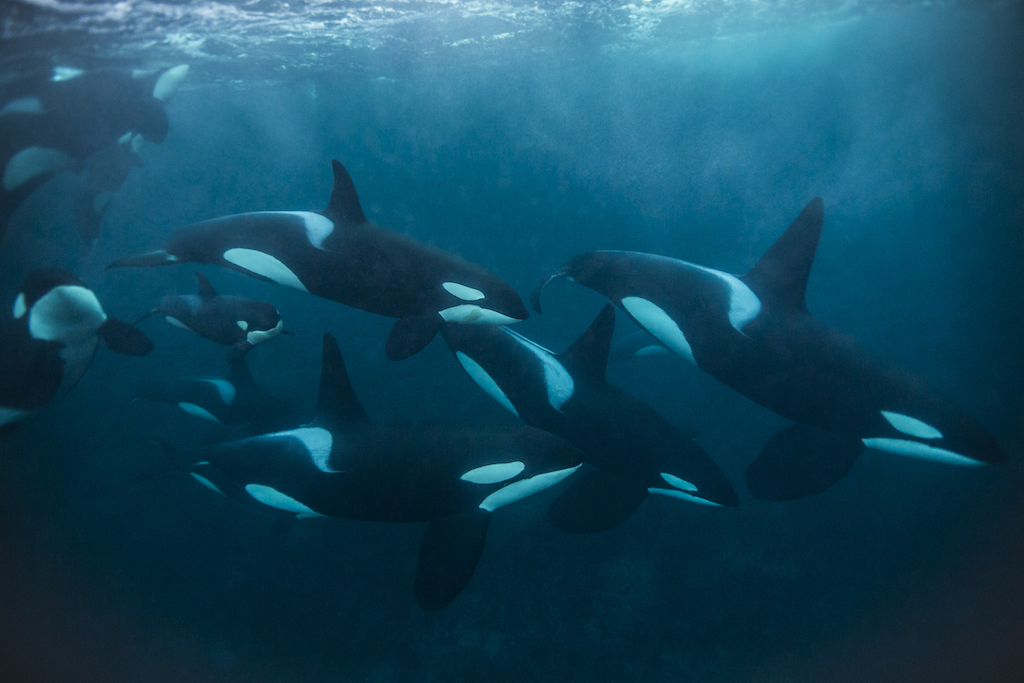Seeing whales at sea in their natural environment is awesome… and respectful
Editorial
It was on a crossing of the Bay of Biscay on one of those days where a total lack of wind brings the sea down to a state of gently heaving glassy calm. The sky was similarly completely covered by a nondescript non-undulating layer of wan grey cloud. The horizon had gone, and the only evidence that we were not suspended within a monochrome pale grey fish bowl was our wake as we puttered across a bit of ocean that felt like a desert.
Then, way up ahead there were some breaks in the sea surface like little black ripples. Oh good, that’ll be the horizon then, and a change in the weather, we thought. But the ripples were closer than that and they began on our starboard bow and stretched out over a 45-degree arc, and we were getting closer to them.
Then we saw the fins, huge black daggers sawing up into the air, before disappearing. Orcas! We could see a huge family of killer whales, stretched out in a line perhaps a mile long; at least 30, or more. Some were big, some small. We were mesmerized as the Westerly Consort closed with this quiet black and white parade of these apex predators on a course 90 degrees across our own, heading north west.
As we crossed the line one of the leading bulls broke the surface 20 feet on our port beam. He took a huge long wheezy breath and sounded like an old man climbing stairs. Two smaller whales broke rank and peeled off to follow us for a while – a move which had a slightly dangerous thrill to it; that bull was as big as our boat.
We watched the whales with a sense of awe; it was one of those animal meetings in nature which have a primeval quality, where you know you’re witnessing something far more powerful than you. They take us out of our comfort zone, a zone that was never intended by nature, and truly serve as wonders of the world. But they only work properly if they remain in nature, where they make some of your blood turn to vinegar and your senses suddenly tune up like a violin string.
You can get awestruck, and hopefully you come away loving the world, and your life, that much more. “That’s something to tell the grandchildren!” is what we might say.
But seeing a whale in a zoo has nothing of the same power, especially if it is performing tricks for dead fish. We do that because it’s just something to do when we get bored of shopping, and: ‘My, aren’t they really quite big and powerful!’ We revert to a childish state with our monkey brain wanting to be entertained in the old Victorian fashion. We can say we respect the animals and that we are studying them but really what is happening is that we are disrespecting ourselves. We certainly massively impoverish our own experience and philosophy of the natural world .
Putting any kind of cetacean, or sentient animal into the caged or performing environment is a false representation of nature, and should be viewed that way, but also there is our caring aspect for the animal – which reflects our own humanity. With the death of SeaWorld’s killer whale Tilikum, (CLICK) in January after 33 years kept in tiny spaces, I thought of those Biscay orcas and the other times the sea has seemed like a big blue free safari-aquapark.
Putting animals in zoos is a way of stating that we are above, and not a part of, nature. It reinforces ideas about the world as a pleasurable resource, rather than something we need to care about. And if we cared about ourselves more, we’d probably be better at caring for nature as well, and living in it.
Dan Houston
From CS No14 February 2017
Photo: Paul Nicholson / National Geographic


